
Sibyl rock is an outcropping of rock on the site of Delphi, standing just to the south of the Polygonal Wall.

Sibyl rock is an outcropping of rock on the site of Delphi, standing just to the south of the Polygonal Wall.
Pausanias, a visitor to the site in the 2nd century CE, writes in his travel log: "There is a rock rising up above the ground. The Delphians say a woman stood there and chanted the oracles. Her name was Herophile, whose surname was Sibyl. I find that she was the previous Sibyl, just as ancient as any other, whom the Greeks say to be a daughter of Zeus by Lamia, daughter of Poseidon, and the first woman to chant oracles. They also say that she was named Sibyl by the Libyans."

In Greek mythology, Alcmene or Alcmena was the wife of Amphitryon by whom she bore two children, Iphicles and Laonome. She is best known as the mother of Heracles, whose father was the god Zeus. Alcmene was also referred to as Electryone (Ἠλεκτρυώνη), a patronymic name as a daughter of Electryon.

In Greek mythology, Aegeus was an archaic figure in the founding myth of Athens. The "goat-man" who gave his name to the Aegean Sea was, next to Poseidon, the father of Theseus, the founder of Athenian institutions and one of the kings of Athens.

Delphi, in legend previously called Pytho (Πυθώ), in ancient times was a sacred precinct that served as the seat of Pythia, the major oracle who was consulted about important decisions throughout the ancient classical world. The oracle had origins in prehistory and it became international in character and also fostered sentiments of Greek nationality, even though the nation of Greece was centuries away from realization. The ancient Greeks considered the centre of the world to be in Delphi, marked by the stone monument known as the omphalos (navel). The sacred precinct of Ge or Gaia was in the region of Phocis, but its management had been taken away from the Phocians, who were trying to extort money from its visitors, and had been placed in the hands of an amphictyony, or committee of persons chosen mainly from Central Greece. According to the Suda, Delphi took its name from the Delphyne, the she-serpent (drakaina) who lived there and was killed by the god Apollo.

An oracle is a person or agency considered to provide wise and insightful counsel or prophetic predictions, most notably including precognition of the future, inspired by deities. As such, it is a form of divination.

In Greek mythology, Mnemosyne is the goddess of memory and the mother of the nine Muses. The term Mnemosyne is derived from the same source as the word mnemonic, that being the Greek word mnēmē, which means "remembrance, memory".

Dodona in Epirus in northwestern Greece was the oldest Hellenic oracle, possibly dating to the second millennium BCE according to Herodotus. The earliest accounts in Homer describe Dodona as an oracle of Zeus. Situated in a remote region away from the main Greek poleis, it was considered second only to the Oracle of Delphi in prestige.

Nyx is the Greek goddess of the night. A shadowy figure, Nyx stood at or near the beginning of creation and mothered other personified deities such as Hypnos (Sleep) and Thanatos (Death), with Erebus (Darkness). Her appearances are sparse in surviving mythology, but reveal her as a figure of such exceptional power and beauty that she is feared by Zeus himself.
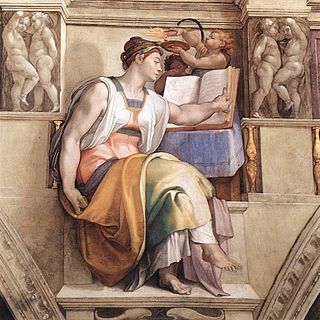
The Erythraean Sibyl was the prophetess of classical antiquity presiding over the Apollonian oracle at Erythrae, a town in Ionia opposite Chios, which was built by Neleus, the son of Codrus.
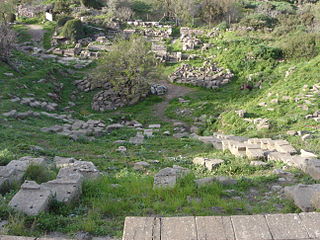
Erythrae or Erythrai later Litri, was one of the twelve Ionian cities of Asia Minor, situated 22 km north-east of the port of Cyssus, on a small peninsula stretching into the Bay of Erythrae, at an equal distance from the mountains Mimas and Corycus, and directly opposite the island of Chios. It is recorded that excellent wine was produced in the peninsula. Erythrae was notable for being the seat of the Erythraean Sibyl. The ruins of the city are found north of the town Ildırı in the Çeşme district of Izmir Province, Turkey.
The sibyls were prophetesses or oracles in Ancient Greece. The sibyls prophesied at holy sites. A sibyl at Delphi has been dated to as early as the eleventh century BC by Pausanias when he described local traditions in his writings from the second century AD. At first, there appears to have been only a single sibyl. By the fourth century BC, there appear to have been at least three more, Phrygian, Erythraean, and Hellespontine. By the first century BC, there were at least ten sibyls, located in Greece, Italy, the Levant, and Asia Minor.

In Greek mythology, Perseus is the legendary founder of Mycenae and of the Perseid dynasty. He was a Greek hero and a slayer of monsters before the days of the Trojan war and Heracles. He beheaded the Gorgon Medusa for Polydectes and saved Andromeda from the sea monster Cetus. He was the son of Zeus and the mortal Danaë, as well as the half-brother and great-grandfather of Heracles.

Bakis is a general name for the inspired prophets and dispensers of oracles who flourished in Greece from the 8th to the 6th century B.C. Philetas of Ephesus, Aelian and John Tzetzes distinguish between three: a Boeotian, an Arcadian and an Athenian.

The Delphic Sibyl was a woman who was a prophet associated with early religious practices in Ancient Greece and is said to have been venerated from before the Trojan Wars as an important oracle. At that time Delphi was a place of worship for Gaia, the mother goddess connected with fertility rituals that are thought to have existed throughout the ancient Mediterranean world. As needed to maintain the religious tradition, the role of sibyl would pass to another priestess at each site.

The Persian Sibyl - also known as the Babylonian, Hebrew or Egyptian Sibyl - was the prophetic priestess presiding over the Apollonian oracle.
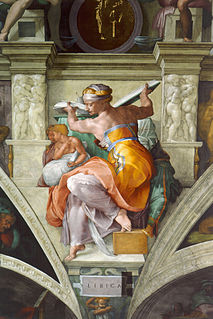
The Libyan Sibyl, named Phemonoe, was the prophetic priestess presiding over the Oracle of Zeus-Ammon at Siwa Oasis in the Libyan Desert.
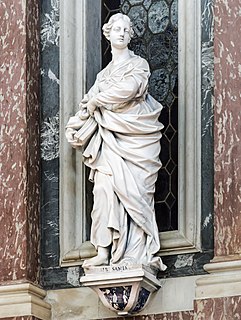
The Samian Sibyl was the priestess presiding over the Apollonian oracle near Hera's temple on the Isle of Samos, a Greek colony. The word Sibyl comes from the ancient Greek word sibylla, meaning prophetess. There were many Sibyls in the ancient world but she is the one who prophesied the Birth of Jesus in the stable. The Samian Sibyl, by name Phemonoe, or Phyto of whom Eratosthenes wrote.
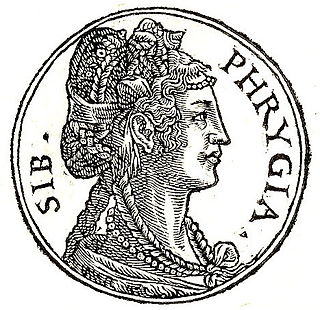
In the extended complement of sibyls of the Gothic and Renaissance imagination, the Phrygian Sibyl was the priestess presiding over an Apollonian oracle at Phrygia, a historical kingdom in the west central part of the Anatolian highlands. She was popularly identified with Cassandra, prophetess daughter of Priam's in Homer's Iliad.

In Greek mythology, Gaia, also spelled Gaea, is the personification of the Earth and one of the Greek primordial deities. Gaia is the ancestral mother—sometimes parthenogenic—of all life. She is the mother of Uranus, from whose sexual union she bore the Titans, the Cyclopes, and the Giants; as well as of Pontus, from whose union she bore the primordial sea gods. Her equivalent in the Roman pantheon was Terra.

The Cumaean Sibyl was the priestess presiding over the Apollonian oracle at Cumae, a Greek colony located near Naples, Italy. The word sibyl comes from the ancient Greek word sibylla, meaning prophetess. There were many sibyls in different locations throughout the ancient world. Because of the importance of the Cumaean Sibyl in the legends of early Rome as codified in Virgil's Aeneid VI, and because of her proximity to Rome, the Cumaean Sibyl became the most famous among the Romans. The Erythraean Sibyl from modern-day Turkey was famed among Greeks, as was the oldest Hellenic oracle, the Sibyl of Dodona, possibly dating to the second millennium BC according to Herodotus, favored in the east.
Marpessos was a settlement in the middle Skamander valley of the Troad region of Anatolia. The settlement's name is also spelled Μαρμησσός, Μαρμισσός, Μερμησσός in ancient sources. It was known in Classical antiquity primarily as the birthplace of the Hellespontine Sibyl Herophile. Its site has been located at Dam Dere approximately 2 km SE of the village of Zerdalilik in the Bayramiç district of Çanakkale Province in Turkey. Despite the similarity of its name and its location on Mount Ida, the settlement is apparently unrelated to the mythological figure Marpessa and her husband Idas. It should likewise not be confused with the Mount Marpessa on Paros.
| Wikimedia Commons has media related to Rock of the Sibyl (Delphi) . |